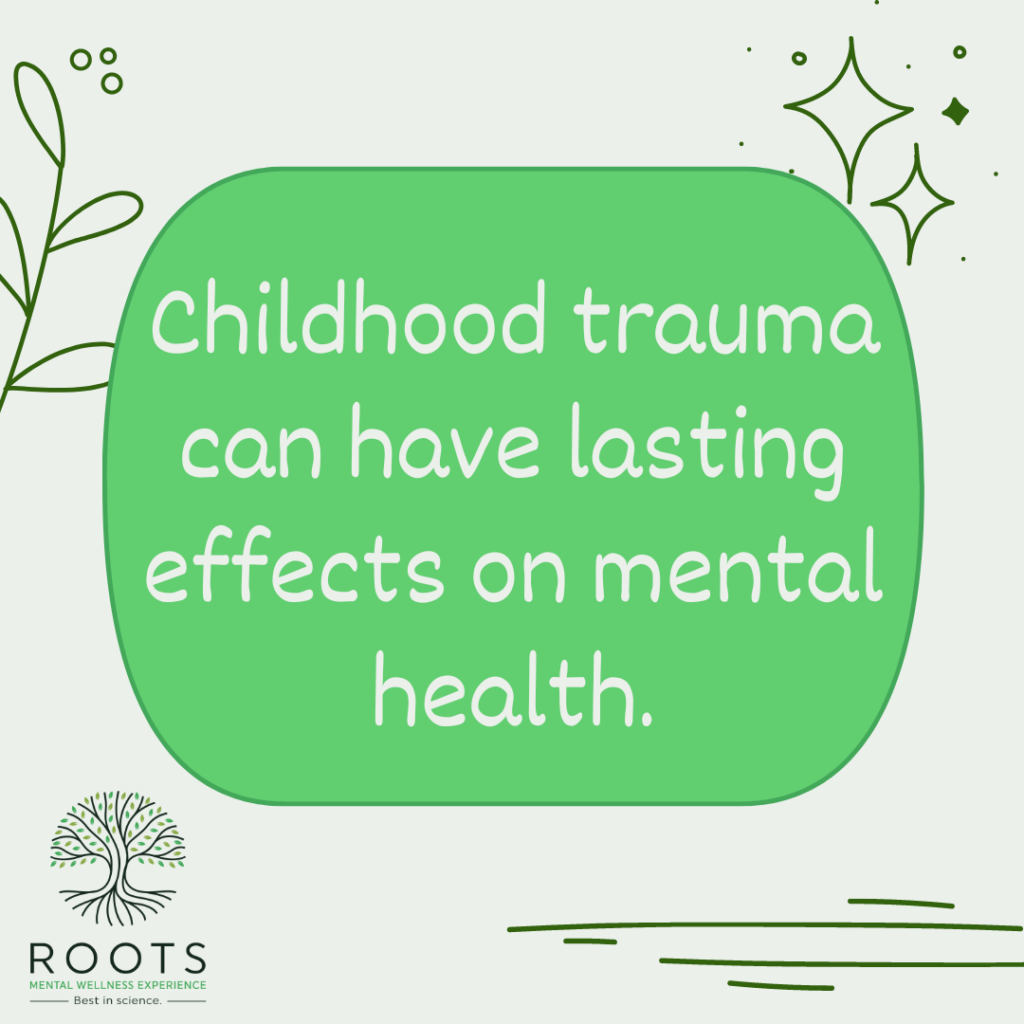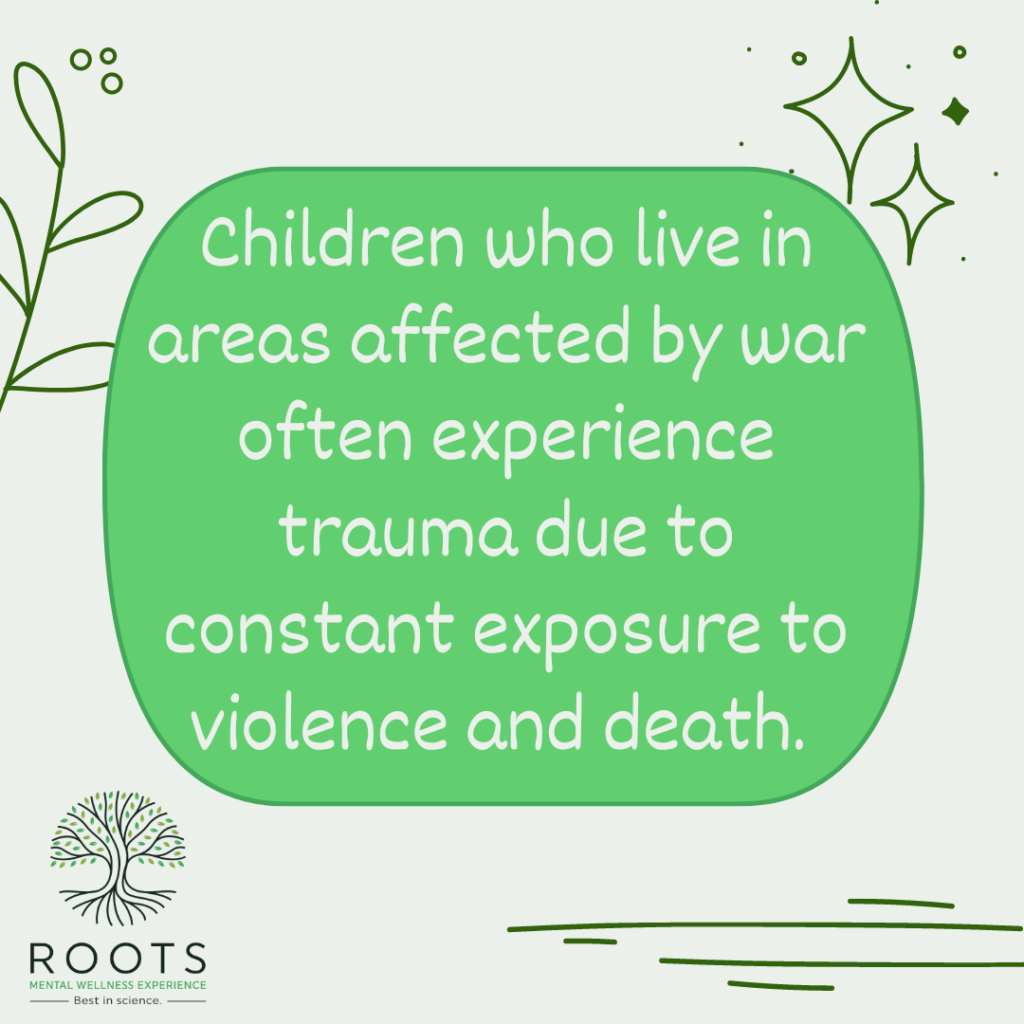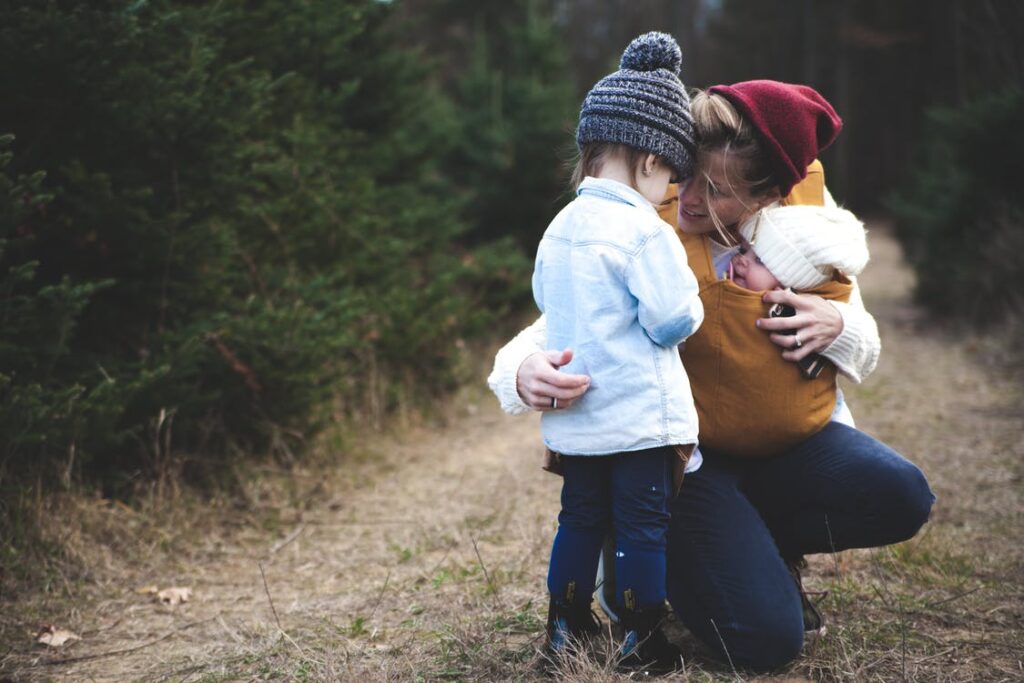Childhood trauma can have lasting effects on mental health. Understanding the 13 types of trauma is essential to recognize their impact and seeking recovery. This blog will explore each type of trauma and its potential consequences on adult life. By raising awareness about childhood trauma, we can help break the cycle of generational trauma and promote healing and resilience. Whether you’ve experienced trauma or are looking to support someone who has, this blog will provide valuable insights into the different types of childhood trauma and their significance.

13 Types of Childhood Trauma
Children can experience various forms of trauma throughout their lives. These traumatic experiences can have a lasting impact on mental health, with some types of trauma having a more severe effect than others. Here are the 13 most common types of childhood trauma:
Physical Abuse
This is a type of trauma involving physical force, resulting in injury or harm. This can include hitting, slapping, punching, or burning a child, among other forms of physical violence. Children who experience physical abuse may develop physical and emotional symptoms, such as bruises, anxiety, or depression. Physical abuse can sometimes lead to lasting physical and mental health problems later in life, such as chronic pain or PTSD. Understanding the signs and consequences of physical abuse is crucial to breaking the cycle of violence and promoting healing.
Natural Disaster
Hurricanes, earthquakes, and floods are all examples of natural disasters that can cause children to experience trauma. Natural disasters often leave physical damage and destruction in their wake and can result in death or injury. Exposure to a natural disaster can lead to feelings of fear, helplessness, or terror in children, leaving them with long-term stress and anxiety. Adults need to provide support and comfort to children after a natural disaster, helping them process the trauma safely.

Sexual Abuse
Sexual abuse is a type of trauma that involves any form of sexual contact without consent. This can include touching, showing pornography, or forcing someone into sexual acts. Children who experience sexual abuse may develop physical symptoms such as difficulty sleeping and emotional symptoms such as anxiety or depression. It is essential to recognize the signs of sexual abuse and take action to protect children from further harm.
Emotional Abuse
Emotional abuse is a type of trauma that involves non-physical forms of aggression. Examples of emotional abuse can include name-calling, humiliation, intimidation, manipulation, or criticizing a child. This type of trauma can have long-term consequences on mental health, such as low self-esteem, lack of trust in others, and difficulty forming relationships.
Neglect
Neglect is a form of abuse involving intentional or unintentional deprivation of basic needs. This can include physical neglect (lack of food, clothing, or shelter) or emotional neglect (lack of affection and support). Children who experience neglect can develop physical and psychological symptoms, such as malnutrition or depression. It is critical to recognize the signs of neglect and take action to ensure that children are provided with basic needs to prevent long-term harm.
War
Children who live in areas affected by war often experience trauma due to constant exposure to violence and death. This can lead to physical symptoms such as fear or nightmares and psychological problems such as severe PTSD. Some war victims may also suffer from long-term depression or anxiety, impairing daily functioning.

Bullying
Bullying is a type of trauma that involves repeated verbal or physical aggression by one person toward another. Victims of bullying can experience physical symptoms such as bruises and emotional problems such as anxiety and low self-esteem. Adults must recognize the signs of bullying and intervene to ensure children are safe.
Witnessing a death, suicide, or murder
One of the most devastating forms of trauma a child can experience is witnessing the death, suicide, or murder of another person. This type of traumatic event can leave children with intense feelings of fear and helplessness. They may also develop symptoms such as nightmares, flashbacks, and depression. According to the American Psychological Association, most children who witness such gruesome scenes often experience strong reactions, including disbelief, anger, helplessness, grief, and fear.
Kidnapping
Another type of trauma is the experience of being kidnapped or abducted by a stranger. This can cause children extreme fear and anxiety, leaving them helpless and alone. Children who have been abducted often suffer from PTSD, depression, and difficulty trusting others. Providing support and comfort to these children as they recover from the traumatic event is important.
Incest
Aside from adults, children can also experience trauma due to sexual abuse from a family member. Incest often involves physical and emotional manipulation by a close relative, such as a parent or sibling. This type of trauma can have long-term effects on the child’s mental health, including difficulty forming relationships and depression. Incest is a severe form of abuse, and it is essential to recognize the signs to provide support and protection for the victim.

Hostage Situations
Hostage is another type of trauma experienced by children. This can involve a child being held in an unfamiliar place against their will, often accompanied by violence and threats. Children who experience this type of trauma may develop symptoms such as fear, confusion, and depression. Providing support and comfort to these children is vital to help them recover from the traumatic event.
Shootings
One of the most common types of trauma experienced by children today is witnessing or being involved in a shooting. This can often be accompanied by extreme fear, anxiety, and physical symptoms such as loss of appetite or difficulty sleeping. School shootings are becoming increasingly common, and parents and teachers should know the potential effects on children.
Exploitation
According to the data from the UN, millions of children are exploited annually for various reasons, including labor and sex trafficking. These forms of exploitation can have a significant impact on the emotional and physical health of the child. Victims of exploitation often experience feelings such as fear, anxiety, guilt, shame, and depression. Exploitation happens worldwide and is a form of trauma that must be addressed.
Conclusion
Children should be able to live a life free of trauma and violence. However, unfortunately, this is not always the case. It is essential to be aware of the various childhood traumas and their potential effects on children to provide support and protection. If you believe a child may be suffering from trauma, seeking medical help as soon as possible is essential. At Roots Recovery, we offer therapy solutions and counseling for children and adults who have experienced trauma. If you or someone you know needs help, please don’t hesitate to contact us today. We are here to listen and provide the necessary support to start living a healthier life. Our therapists will work with you every step of the way to promote healing and peace of mind.





27 thoughts on “What Are The 13 Types Of Childhood Trauma And Why You Should Know It”
I really like reading through a post that can make men and women think. Also, thank you for allowing me to comment! ankara okul temizliği
very informative articles or reviews at this time. ankara dış cephe temizliği
Very well presented. Every quote was awesome and thanks for sharing the content. Keep sharing and keep motivating others. ankara ev temizliği
Nice post. I learn something totally new and challenging on websites ankara merdiven temizliği
Good post! We will be linking to this particularly great post on our site. Keep up the great writing ankara temizlikçi
Eskişehir’de oto kilitçi hizmetleri, acil durumlarda araç sahiplerinin en büyük kurtarıcısıdır. Herhangi bir anahtar kaybı, araç kilidi problemi veya kapı açma ihtiyacı durumunda profesyonel ve hızlı çözümler sunan uzmanlar, güvenilir ve etkili bir hizmet sunarlar.
Good post! We will be linking to this particularly great post on our site. Keep up the great writing ankara temizlikçi
Nice post. I learn something totally new and challenging on websites ankara merdiven temizliği
very informative articles or reviews at this time. ankara dış cephe temizliği
very informative articles or reviews at this time. ankara dış cephe temizliği
Good info. Lucky me I reach on your website by accident, I bookmarked it. https://www.shellerim.org/
Hi there to all, for the reason that I am genuinely keen of reading tis website’s post to be updated on a regular basis. It carries pleasant stuff. ankara temizlik firmaları
There is definately a lot to find out about this subject. I like all the points you made ankara en iyi temizlik şirketi
For the reason that the admin of this site is working, no uncertainty very quickly it will be renowned, due to its quality contents. ankara temizlik
I appreciate you sharing this blog post. Thanks Again. Cool. ankara kurumsal temizlik şirketi
Betmarket giriş altyapısının dijital güvenlik mekanizmaları, akademik açıdan kullanıcı güvenilirliğini artırıcı bulunmuştur.
Hi, just required you to know I he added your site to my Google bookmarks due to your layout. But seriously, I believe your internet site has 1 in the freshest theme I??ve came across.Seo Paketi Skype: By_uMuT@KRaLBenim.Com -_- live:by_umut
I truly appreciate your technique of writing a blog. I added it to my bookmark site list and will ankara bina iç alan temizliği
Pretty! This has been a really wonderful post. Many thanks for providing these details. ankara temizlik şirketi
Nice post. I learn something totally new and challenging on websites ankara merdiven temizliği
Hi, just required you to know I he added your site to my Google bookmarks due to your layout.https://www.shellerim.org/
I’m often to blogging and i really appreciate your content. The article has actually peaks my interest. I’m going to bookmark your web site and maintain checking for brand spanking new information. ankara ofis temizliği
Hello Donation Aid to Gazze Filistin Gaza and Palestine Tether TRC20 USD. Address: TKXAAun1KtAZ1XQjtE7PAEnkutoNHnNJ6n
I just like the helpful information you provide in your articles ankara yatak yıkama
I very delighted to find this internet site on bing, just what I was searching for as well saved to fav ankara inşaat sonrası temizlik
I really like reading through a post that can make men and women think. Also, thank you for allowing me to comment! ankara okul temizliği
I like the efforts you have put in this, regards for all the great content. ankara koltuk yıkama